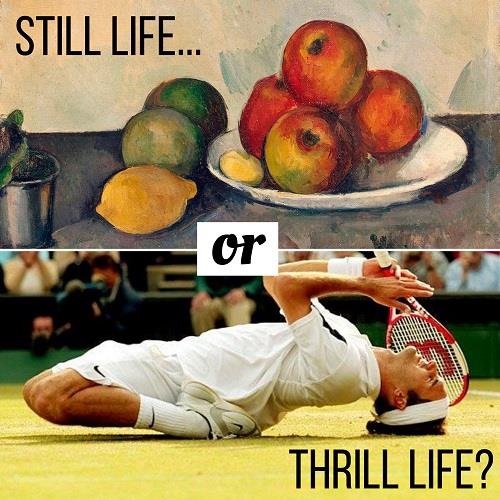You are not a bowl of fruit. Yet.
With time we move less as advancements in society engineer movement out of everyday life in ever-expanding ways.
The result is that instead of running around hunting and gathering to survive, we now have to re-insert physical activity into our days in discreet segments of time we call “exercise.”
And it’s soooooo confusing.
Government guidelines make matters worse, which I explained in the previous blog “149 Minutes.”
But there’s another problem.
Yoga is not fitness – it is a part of fitness. Running is not fitness – it is a part of fitness. Strength training is not fitness – it is a part of fitness. There is no one single activity that is enough to give us a complete fitness experience.
“Fitness” is composed of the many characteristics of human movement turned up to an intensity that challenges them to develop expanded abilities. Those characteristics are, in no particular order: Agility, balance, coordination, endurance, strength, power, reactivity, quickness, flexibility, and mobility. Overdo things in one area and you typically suffer a deficiency in others.
There is no one sport or form of exercise that develops all of these. Varied activities 2-3 times per week should cover the bases. But there is even more benefit. A recent study (Malone, 2020) showed that people in the US who did multiple activities spent more time active each week – and had an easier time meeting those often inscrutable government guidelines for physical activity.
I have always taught this from the perspective of a well-rounded fitness experience and living in a capable body, but now there is an added benefit of easily achieving the mythical “enough” amount of exercise in a week.
What a relief…you no longer need wonder or worry if you are doing enough or if there is anything missing in your fitness efforts.
You can – as just one example – play pickleball, go on a bike ride or hike, do a little strength training, maybe add in a yoga session, doing each 1-2 times per week and you can just live without tracking how much you are doing, comforted by the knowledge that it is almost certainly “enough.”
You will develop a “thrill life” and avoid the perils of the “still life” society we live in.
Reference
Malone, Susan K, et al. Habitual physical activity patterns in a nationally representative sample of U.S. adults, Translational Behavioral Medicine, 27 January 2020 https://doi.org/10.1093/tbm/ibaa002

